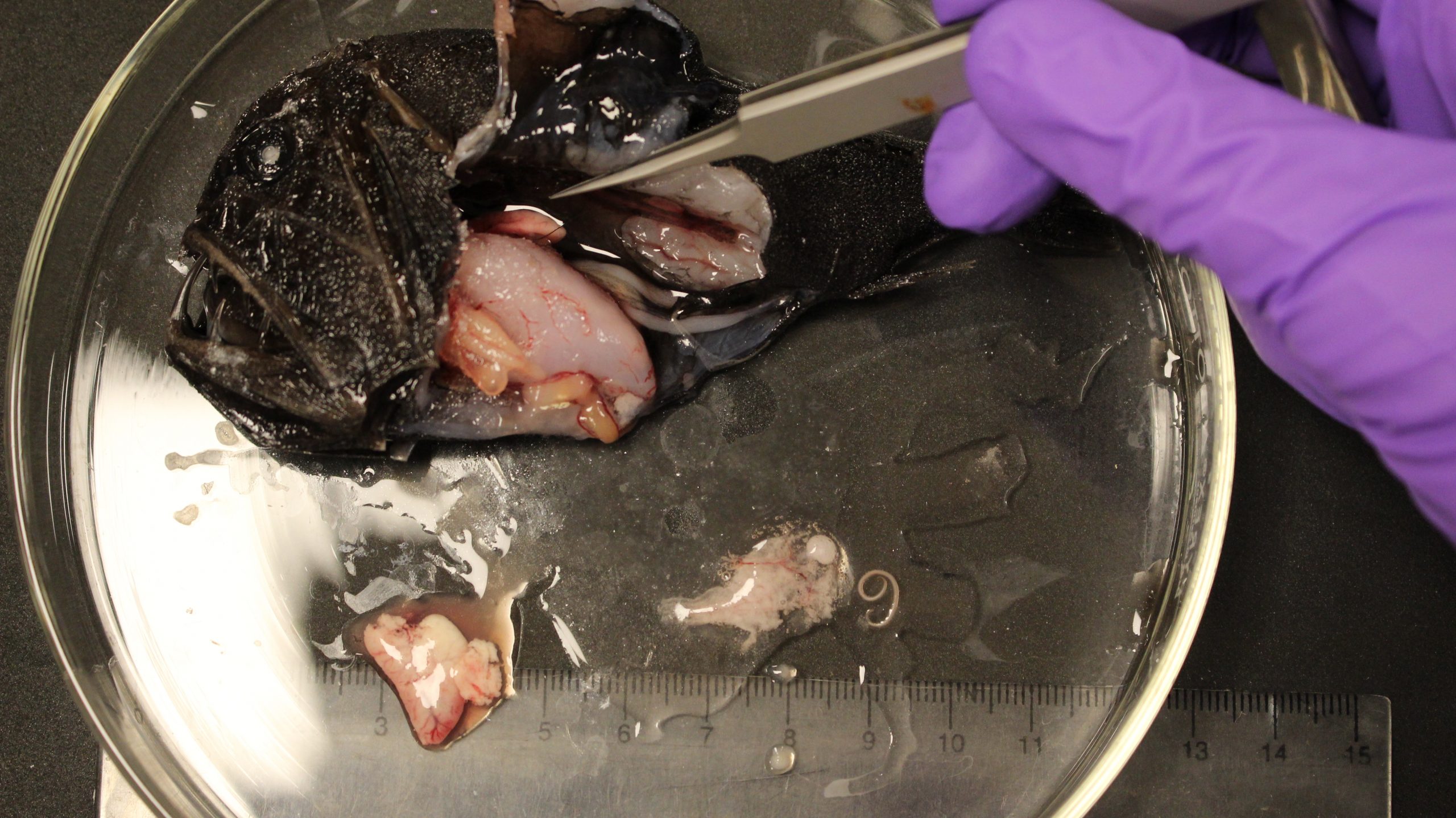Connecting Life in the Ocean Twilight Zone August 4, 2020

Measuring and understanding linkages in the twilight zone food web—and between the twilight zone and other parts of the ocean—are key objectives for the OTZ team. By describing what species are present and how they interact with each other, we've begun to piece together the function and importance of the twilight zone ecosystem as a whole.
Big questions we've tackled:
Over the past year, OTZ researchers have discovered that animals in the twilight zone don’t just fit into a single food web. Instead, they make up at least two distinct, yet related systems: one that interacts with surface food webs and another that appears to remain at depth, largely separate from the surface.
OTZ researchers used stable isotope analysis to reveal the link between twilight zone and surface food webs. By measuring the ratio of carbon 13 and carbon 12 isotopes from amino acids in a fish’s muscle tissue, the researchers were able to determine whether the animal’s primary food source lived at the surface or at depth. Eventually, the stable isotope method may help determine which species migrate to the surface each night, and which ones do not, providing new information on the behavior and life cycles of poorly understood species.






